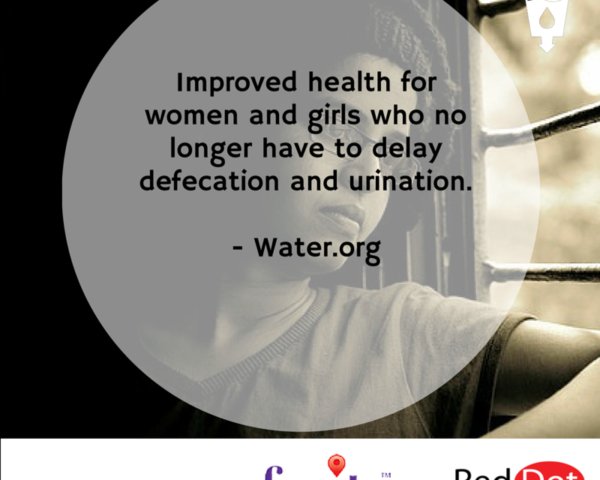Sulabh Movement Timeline: Strengthening Women and Manual Scavengers.

Nagsen Torne is a graduate in Bioanalytical Sciences from Ramnarain Ruia College and is currently pursuing a Masters degree in Public Policy Analysis. He is a kickboxer and also a bibliophile who loves learning. He believes that a pen, a few words and an idea can bring about the greatest of social revolutions.
Sulabh Movement Timeline: Strengthening Women and Manual Scavengers.
The overview of Sulabh International Social Service Organisation Facebook page reads that it has been working in the fields of sanitation, social reform, and education in India for more than 40 years. Sulabh International Social Service Organisation, this humble Delhi based NGO, is credited for being the brain behind one of the most successful social revolutions in India i.e., The Sulabh Sauchalya. This social revolution is undoubtedly one among the stronger contenders that has attempted to achieve the goal of universal sanitation in the developing world.i.e., Sustainable Development Goal 6: To ensure sanitation for all. The conundrum, just around 20,000 Facebook likes for the page of this organisation, shows that the social networking youth of the nation has yet to take note of the efforts of the organisation which has positively affected the lives of a majority of the nation’s population.
This organisation is a non-profit voluntary social organisation dedicated to the Gandhian ideology of emancipation of scavengers. It has been working for the removal of untouchability and social discrimination against human scavengers. Sulabh is also noted worldwide for achieving success in the field of working to promote human rights, sanitation, waste management, non-conventional sources of energy and social reforms through education. It claims to have made 640 towns scavenging free.
On the international front, The Economic and Social Council of the United Nations granted Special Consultative Status to Sulabh in recognition of its work. Sulabh International in collaboration with UN-Habitat, has trained professionals from 14 African countries for their capacity development towards achieving the Sustainable Development Goals in water and sanitation.
Sulabh Shauchalaya: Timeline.
It’s rightly said that India is a land of extremes. On one hand, we have a mission to Mars while on the other, public sanitation is still largely a disaster story. The Indian rural thinking has always revolved around issues of housing, water supply and sanitation, prioritized also in the same order. People thought of sanitation only after they were assured of the first two. Hence, sanitation soon became an acute problem.
The beginning of ‘Sulabh’ can be traced to Dr. Bindeshwar Pathak’s experience with the Balmiki Mukti Cell of Gandhi Centenary Celebration Committee, Patna, as a Pracharak in 1968-70. The job exposed and sensitized him to the problems of scavengers. Inspired by Mahatma Gandhi’s ideas, he decided to fight against the stigma of untouchability attached to this class of people. His doctoral work was on liberation of scavengers through low cost sanitation.
In 1974, the State Government formally recognized Sulabh as an agency to work between the beneficiaries, local bodies, and the government for the implementation of low-cost sanitation. Sulabh workers moved from house to house to convince the owners of the health hazards of bucket privies. Subsequently, Sulabh workers conducted the actual construction work on a turnkey basis. By 1988, 1.86 lakh latrines had been converted into Sulabh Shauchalyas in Bihar alone.
The next big step: Community toilets.
Maintaining public toilets on a pay-and-use basis was a natural extension of Sulabh’s mission. The idea was to overcome the constraints in scaling up the sanitation and hygiene. The public toilets or community complexes targeted the sanitary needs at public places, otherwise marked by filthy and poorly built municipality toilets. Sulabh International Social Service Organization has set up more than 5,500 public toilet complexes throughout India and over 100 biogas plants which serve over 10 million people every day.
Rehabilitation and Women Empowerment:
Lack of access to adequate sanitation leads to widespread disease and death- especially among women and children- and also to social marginalisation. The international community has thus acknowledged the importance of sanitation, as a Sustainable Development Goal adopted post 2015.
Improving sanitation would make 1.25 billion women’s lives both safer and healthier. Improved sanitation could mean every girl being able to stay in school when she reaches puberty, and all women having a safe place to go so that they are free from fear of assault and the loss of dignity from going in the open. It could free women from the burden of helping their children and family members use a toilet far away to use. It would help women to take on paid work and to stay at work during menstruation so that they can earn more and reinvest this into a better life for themselves and their families. Every day around 2,000 mothers lose a child to diarrhoea caused by lack of access to safe toilets and clean water. Every developing nation wants to see an end to the disease which sanitation brings to women and their families.
From the first moments of birth, both babies and mothers are susceptible to infection. Improved sanitation gives children the best start in life. During school years, access to a toilet can help children succeed in education. Basic sanitation and hygiene will reduce the number of episodes of diarrhoea and worm infections making sure children don’t miss class due to illness. When a girl reaches puberty access to a safe, private toilet can make a crucial difference. Girls need clean water to wash themselves or their menstrual cloths and a place to dispose of their menstrual pads if they are using them. When women don’t have access to a toilet they are forced to go outside. This can mean travelling long distances and often at night in order to retain some privacy and dignity under the cover of darkness. This can increase the risk of harassment, sexual violence and even rape. Poor sanitation has a domino effect. With the considerable impact of unhygienic sanitation facilities on health, a lack of facilities in the workplace can have an impact on absenteeism, affecting livelihood.
Sulabh is moving in the direction to attend to the dangers mentioned above, one public toilet time at a time. One toilet can transform the entire life of a woman by making her safer and healthier, and then women have the power to transform their families. Besides, it also undertakes social upliftment programmes especially for female scavengers. Despite the long cultural legacy of caste system, around 200 women from Alwar and Tonk districts of Rajasthan took a bath at the famous Ramghat on the banks of Kshipra river to promote egalitarian social inclusion. Sulabh also initiated a pragmatic step towards inclusion of female scavengers in the form of Nai Disha, a vocational training centre in Alwar, Rajasthan. The decision regarding selection of courses is taken up by women scavengers themselves. Twenty-eight women have so far been trained in food processing, beauty care, embroidery and cutting and tailoring. The social transformation brought about can be gauged by the incredible fact that the same society that was averse even to touch a scavenger, today readily purchases products (even eatables) prepared by the hands of these very scavengers. They are paid a monthly stipend of Rs.1800.00 so that they do not revert back to their old profession of scavenging. The happy success stories of these ladies, tagged as the “Princesses of Alwar” can be read here. Another ingenious programme for the welfare of widows in Vrindavan by accepting donations was taken up by Sulabh on mother’s day. In 1995, a programme on women empowerment was launched in collaboration with USAID, educating them on environment sanitation and community health. In 1988, Pathak led Harijans to Nathdwara temple in Udaipur to defy inhuman orthodoxy and promote social integration. He even organized common puja and community meals together for high caste Brahmins and scavengers. In 1992, an English medium school was opened in Delhi for the scavengers’ children extending Sulabh’s philosophy of overall socio-economic development of scavengers.
In this way, the strings to a dream of universal healthy sanitation are being pulled by a glamour averse organisation, behind the scenes. The overall objective in the above water and sanitation sector is to promote the survival, protection and development of women and children, and to promote behavioural changes essential to realizing the full benefits of these services. These and other objectives cannot be met without the full participation of women.


